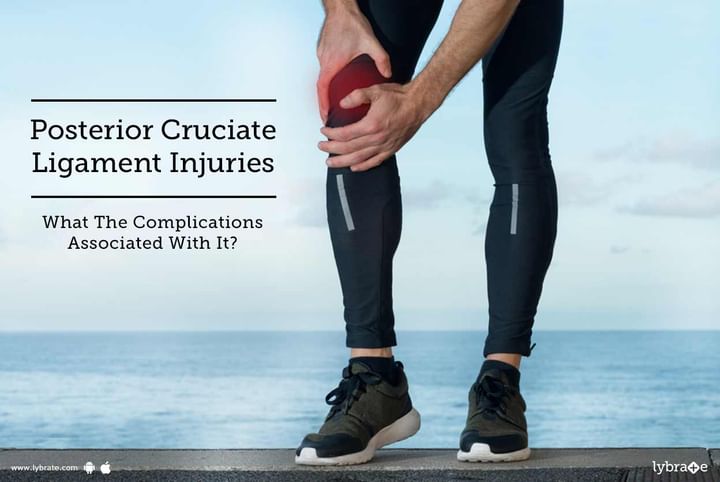Posterior Cruciate Ligament Injuries - What The Complications Associated With It?
Posterior cruciate ligament helps to hold the knee together. If there is a ligament tear, it results in pain, swelling and redness. The cruciate ligament connects the important tibia to the femur. Any injury to the posterior cruciate ligament may take months to heal and has the potential to cause instability and disability.
Signs and symptoms: The symptoms and signs of a posterior cruciate ligament injury include moderate to severe pain resulting in difficulty in walking and limp. The knee swells to a large proportion within minutes of the injury causing the knee to feel loose. There are certain situations when a patient doesn’t feel a thing about the injury and then there is a case where the pain worsens every day.
Causes: A tear in the posterior cruciate ligament appears when the shin bone gets hit. It can also occur when a person falls down with a bent knee. Some common injuries of this sort occur during motor vehicle accidents and contact sports. Apart from this, sudden accidents hitting the back portion of the knee can also result in ligament injury of the posterior cruciate ligament. Historically, men have been found to be more risk prone to this condition as compared to women.
What are the complications?
A posterior cruciate ligament injury may result in damage to other ligaments and bones within the knee. Based on the type of injury, the long term implications are predicted by healthcare professionals. The risk of developing arthritis and long term chronic pain exists in this condition.
Diagnosis
- X-rays. Although they will not show any injury to your posterior cruciate ligament, X-rays can show whether the ligament torn off with a piece of bone when it was injured. This is called as an avulsion fracture.
- MRI. This study creates better images of soft tissues like the posterior cruciate ligament.
Treatment
Nonsurgical Treatment
If you have injured just your posterior cruciate ligament, your injury may heal quite well without surgery doctor recommend simple, nonsurgical options.
- RICE: When you are first injured, the RICE method - rest, ice, gentle compression and elevation can help speed your recovery.
- Immobilization: You may require a brace to prevent your knee from moving. To further protect your knee, you may be given crutches to keep you from putting weight on your leg.
- Physical therapy: As the swelling goes down, a careful rehabilitation program is started. Specific exercises will restore function to your knee and strengthen the leg muscles that support it. Strengthening the muscles in the front of your thigh (quadriceps) has been shown to be a key factor in a successful recovery.
Surgical Treatment
Your doctor may recommend surgery if you have combined injuries. For example, if you have dislocated your knee and torn multiple ligaments including the posterior cruciate ligament, surgery is almost always necessary.
- Rebuilding the ligament: Because sewing the ligament ends back together does not usually heal, a torn posterior cruciate ligament must be rebuilt. Your doctor will replace your torn ligament with a tissue graft. This graft is taken from another part of your body. It can take several months for the graft to heal into your bone.
- Procedure: Surgery to rebuild a posterior cruciate ligament is done with an arthroscope using small incisions. Arthroscopic surgery is less invasive. The benefits of less invasive techniques include less pain from surgery, less time spent in the hospital, and quicker recovery times.
Surgical procedures to repair posterior cruciate ligaments continue to improve. More advanced techniques help patients resume a wider range of activities after rehabilitation.
Rehabilitation
Whether your treatment involves surgery or not, rehabilitation plays a vital role in getting you back to your daily activities. A physical therapy program will help you regain knee strength and motion. Although it is a slow process, your commitment to therapy is the most important factor in returning to all the activities you enjoy. If you wish to discuss about any specific problem, you can consult an Orthopedist.
RELATED ISSUES
RELATED SPECIALITIES
Ask a free question
Get FREE multiple opinions from Doctors



+1.svg)
